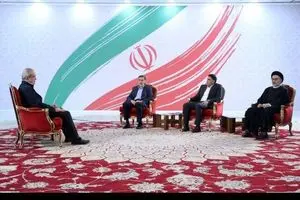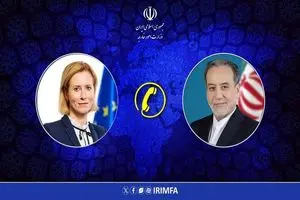Bosnia museum's Palestine donation hailed as strong move against cultural erasure
Bosnia museum's Palestine donation hailed as strong move against cultural erasure

The National Museum of Bosnia and Herzegovina’s announcement that it would donate the proceeds of sales linked to a famous Jewish medieval manuscript towards “helping Palestine” in the face of Israel’s “genocide” in Gaza has been seen as a significant gesture to protect Palestinian heritage and culture.
Earlier this month, the cultural institution based in the capital, Sarajevo, said the income from the sale of the publication The Sarajevo Haggadah - History and Art, as well as tickets to see the artefact, would serve to fund Palestinian causes.
“In this way, the National Museum of Bosnia and Herzegovina provides support to the people of Palestine who suffer systematic, calculated and cold-blooded terror, directly by the state of Israel, and indirectly by all those who support and/or justify it in its shameless actions,” the museum said in a statement.
“As an institution that deals with the protection of cultural, historical and natural heritage, we are obliged to warn that in the shadow of this tragedy, the targeted erasure of the cultural and religious identity, primarily of Muslims and Christians of Palestine, is taking place,” the statement continued.
The Sarajevo Haggadah, a richly illuminated manuscript gathering religious precepts and traditions used to mark Passover, is thought to be the museum’s most important and valuable artefact. Written in northern Spain in the 14th century, it is considered one of the oldest of its kind in the world.
The announcement drew fierce criticism from some Jewish groups, which accused the museum of “exploiting” and “politicising” a sacred Jewish text.
Mirsad Sijaric, the museum director, revealed to Middle East Eye that the institution even received threats. Regardless, he said, his country had a moral obligation not to remain silent in the face of what a growing number of states, organisations and legal experts call a genocide.
“For us at the museum, the silence of the world became unbearable. So, we did what we could: we raised our voices,” he told MEE.
“We’ve taken action before to express solidarity, but this time, given the radical deterioration of the situation in Palestine - not only in Gaza - we felt we had to respond publicly.
“As a museum facing chronic financial challenges, we had limited options. But in light of everything happening, our own problems seemed far less important.”
The decision to place the Sarajevo Haggadah at the centre of this action was deliberate, given the manuscript’s historical and symbolic weight.
‘For us at the museum, the silence of the world became unbearable. So we did what we could: we raised our voices’
- Mirsad Sijaric, director of the National Museum
“We knew that choosing the Haggadah would raise many questions,” Sijaric said from his office across from the exhibition room. “But the most important question is how we respond to events that are fundamentally reshaping the world and undermining international law, standards and values.”
The museum’s decision has largely been welcome in a country which sees painful parallels between Israel’s offensive in Gaza and the Bosnian War in the 1990s.
Amila Buturovic, a Sarajevo-born historian and professor of religion and culture at York University in Toronto who conducted an essential part of her research in the museum, told MEE how she was deeply touched and proud of this decision, describing it as “a gesture that reminds us we are all in this together”.
“All of us feel helpless in the face of the war and genocide, especially people from Bosnia and Herzegovina,” she said.
“For us, Gaza is a trigger for retraumatisation while the scenes we see remind us of how we also were forgotten, denied, disenfranchised and humiliated. And because of that, it feels so natural to sympathise with Gaza… That income is not huge, but the act is huge,” she added.
A symbol of resilience and solidarity
Following the breakup of Yugoslavia and the independence of Bosnia and Herzegovina in 1992, the Balkan country was engulfed in an inter-ethnic war that pitted the Republic of Bosnia and Herzegovina against the self-proclaimed Bosnian Serb and Croat entities, supported by neighbouring Serbia and Croatia, respectively.
The conflict, which lasted until 1995, was considered at the time the most violent that Europe had known since the end of World War II.
Over 120,000 people were killed, more than 2.2 million displaced, concentration camps were established and over 40,000 women, predominantly Bosnian Muslims, were the victims of rapes, mainly carried out by Serb forces. Meanwhile, Sarajevo experienced the longest siege of a capital city in the history of modern warfare.
The massacre of over 8,000 Bosnian Muslim men and boys by Serb forces in a United Nations-declared “safe zone” in the town of Srebrenica during the war is the only incident in Europe to have been recognised as a genocide since World War II.
The war left Bosnia and Herzegovina deeply divided along ethnic lines, with weak institutions and an unresolved legal status for national cultural institutions like the National Museum. These challenges forced the museum to close between 2012 and 2015.
As a result, for years, the Haggadah’s conservation was in jeopardy, but thanks to the work of a younger generation of historians and museum professionals, as well as support from all over the world, a specially designed room was created for its permanent display and, in 2017, it was inscribed on Unesco’s Memory of the World Register as “a true cultural treasure illustrating Jewish heritage and medieval art in Europe”.
For the people of Sarajevo - Jews and others, religious or not - this manuscript is the symbol of resilience and solidarity.
It was written in Barcelona around 1350 and brought to Bosnia and Herzegovina by Sephardic Jews after they were expelled from Spain. For some time, it was owned by the Cohen family, but due to financial difficulties, they sold it to the National Museum in 1894.
‘For us, Gaza is a trigger for retraumatisation while the scenes we see remind us of how we also were forgotten, denied, disenfranchised and humiliated’
- Amila Buturovic, historian
During World War II, Dervis Korkut, a Bosnian Muslim scholar and curator at the National Museum, risked his life to smuggle the manuscript out of the city before Nazi forces entered.
Korkut hid the Haggadah in his trousers and brought it to the imam of a small village in the nearby Bjelasnica mountain, where the document was concealed until the end of the war.
Decades later, during the 1992–1996 siege of Sarajevo, the Haggadah faced renewed danger. The National Museum was at the front lines, exposed to shelling and sniper fire, and badly damaged. The book was quietly transferred to the Central Bank’s vault for safekeeping until the end of the war.
‘Global resistance to genocide’
The museum’s decision to dedicate all proceeds from the Haggadah reflects popular opposition to Israel’s actions against Palestinians in the Balkan country, which has seen a number of demonstrations against the war in Gaza.
Meanwhile, Bosnia and Herzegovina has voiced some criticism of Israel’s policy. The Bosnian Croat member of the tripartite presidency, Zeljko Komsic, stated in April that what has been happening in Gaza is a “genocide, as it was in Srebrenica”. The country also voted in favour of a UN General Assembly resolution demanding an end to Israel’s illegal occupation of Palestinian territories last year.
For Sijaric, however, Bosnian authorities have failed to sufficiently condemn and prevent what is happening in Gaza, making the museum’s move all the more important.
“Bosnia is not a powerful state, not in any sense. But we must take a clear stance and send a message that we are against evil,” he said.
The museum’s initiative is also seen as an important gesture to point especially at the destruction of Palestinian culture, heritage and history by Israel.
In June, the UN Independent International Commission of Inquiry on the Occupied Palestinian Territory accused Israel of obliterating Gaza’s education system and destroying over half of all religious and cultural sites in the Gaza Strip, as “part of a widespread and relentless assault against the Palestinian people in which Israeli forces have committed war crimes and the crime against humanity of extermination”.
“Attacks on cultural and religious sites have deeply impacted intangible culture, such as religious and cultural practices, memories and history,” said Navi Pillay, the chair of the commission. “The targeting and destruction of heritage sites, the limiting of access to those sites in the West Bank and the erasure of their heterogenic history erode Palestinians’ historical ties to the land and weaken their collective identity.”
For Buturovic, Israel’s obliteration of Palestinian heritage represents, together with the physical destruction of the population, the very core of the genocide.
“This erases the spaces of the past and the future because the culture of memory is destroyed.”
This is why the decision to donate the benefits from the Sarajevo Haggadah is a strong symbolic gesture, she believes.
“The Sarajevo Haggadah owes its survival to the people of Sarajevo, who saved it from destruction in several bouts of injustice and attacks on the Jewish community in Bosnia and Herzegovina and their heritage,” she told MEE, stressing that “the value of cultural artefacts lies in their ability to transcend the boundaries of geography, language and history”.
“Only if we all strive to preserve cultural heritage, regardless of where it is from, can we be part of the global resistance to genocide.”








